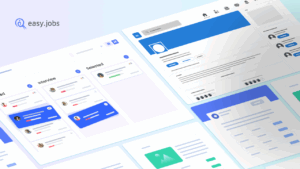Compliance with laws and regulations is not just a goal in the complex world of human resources (HR); it’s a must. HR compliance training covers multiple things, from labor rules to workplace practices. All of these are meant to protect both workers and companies.
But keeping HR compliance isn’t as easy as it sounds. It requires a thorough understanding of the rules, training planned ahead of time, and a determination to avoid common mistakes that can cost in the long run.

💡 Understanding HR Compliance: What Is It?
At its core, HR compliance involves following all applicable laws and regulations that impact the job relationship. This includes federal, state, and local rules about labor standards, workplace discrimination, safety, harassment, pay, perks, and more.
To keep up with these constantly changing rules, organizations need to create a culture of compliance and offer continuous training to ensure that all employees, from top leaders to front-line workers, know and follow the rules.
🎯 Why HR Compliance Training Is Essential?
Effective HR compliance training is essential for several reasons. It will help make a healthy office environment, building a bridge between the employees and the authority. A well-organized HR policy, which engages workers and employers, serves the interests of all. Let’s focus on some of the necessities of HR compliance training.
👉 Risk Management: Not following the rules can lead to lawsuits, fines, damage to your business’s image, and even the closure of your business. HR compliance training helps reduce these risks by giving employees the information they need to make good choices and do things the right way.
👉 Employee Rights & Safety: Compliance rules often focus on the rights and security of employees. Training makes sure that workers know their rights, safety rules for the job, and how to report violations.

👉 Brand Identity: Keeping a good image as a law-abiding and honest business is important to hire the best talent and keep your clients. A company’s brand image can be helped by its attention to safety.
👉 Operational Efficiency: Operations run more smoothly when rules are clear and transparent to the employees. An organization works better when everyone knows what they are responsible for and their jobs.
🧑🏫 HR Compliance Training: What You Need To Know
Implementing effective HR compliance training involves a strategic approach. Below is a checklist you can look at for collaborating on the best HR policies with the employees for establishing the most satisfactory work culture.
📌 Document Policies & Procedures
The key to compliance is clear writing of policies and processes. Policies should cover many things, like not discriminating, not harassing, making sure the workplace is safe, giving perks, and more. Rules changes should be regularly reflected in these papers or an online documentation guide.
Make sure that rules are followed the same way throughout the whole organization. This means that the rules come from the top down and that all workers are treated equally.
📌 Make Policies Accessible
Handbooks and rules should be available both in print and online. Give workers a set amount of time to read and understand these tools. Make sure that all workers can quickly find the rules.

📌 Conduct Training Programs
Conduct complete training programs that cover multiple dimensions of compliance. These programs should involve all the employees to fit their needs and demands. This will help your organization develop a more skilled employee group, leading to better performance.
📌 Stay Updated
Laws and rules change all the time. If you keep hold of the old school do’s and don’t’s, you are missing out on the needs and demands of the young employees and recent trends. Keep up with what’s happening worldwide to ensure your instruction tools are still true and useful.
📌 Audit Regularly
Check for compliance regularly to find places to improve and fill any training or application holes. Regular audits will disclose the gaps and what needs to be done accordingly. On top of that, unplanned audits will help find anomalies that are often overlooked in regular audits.
📌 Integrate Technology
Use HR apps and tools like Zoho and Slack to make compliance easier. These tools can handle tasks, give information on workflows and activities, and make reporting easier. Plus, these can let you communicate directly with anybody in an organization and reduce multiple communication layers, which is often time-consuming.
🚫 Maintaining HR Compliance: Mistakes To Avoid
All of these HR policies and rules are carefully developed to protect employees’ rights and companies’ reputations. However, maintaining HR compliance requires a deep knowledge of the rules, strategic training, and careful attention to avoid common mistakes.

👉 Ignoring Clear Documentation
Compliance in HR is based on documentation. Well-written policies and processes help an organization decide what to do and how to do it. Not writing down these policies completely and correctly is like trying to find your way in the dark.
Policies should cover many topics, such as how to stop harassment, keep the workplace safe, perks, and more. Also, you can’t say enough about the importance of keeping this documentation up-to-date to stay in line with new rules.
👉 Implementing Unfair Rules
Rules and methods must be applied fairly. Everyone, from the CEO to the newest employee, should support fairness. Different ways of applying the rules can make workers unhappy and hurt the trustworthiness of the rules.
👉 Having Inaccessible Compliance Policy
Policies and methods are often not made easy to find. All employees must have easy access to these records, whether on paper or on a computer. Giving workers time to read and understand these things is also important.
👉 Providing Inequitable Training
Taking a general approach to training programs is a usual mistake. Based on their jobs and tasks, different employees have different legal needs. For these groups to understand and follow the rules, they need training programs tailored to their needs.
👉 Not Staying Up-To-Date
Laws and rules change often. Keeping up with all of these changes is always hard. If you ignore changes, you might not follow the rules and get into trouble with the law. So, from a strategic point of view, it’s important to put resources towards keeping track of and responding to new rules.
👉 Ignoring Audits
Audits show where training, implementation, or paperwork is lacking so problems can be fixed quickly. Both planned and unplanned checks help the effectiveness of the organization’s compliance.
👉 Leaders Unsupporting Compliances
How the leaders of an organization feel about the compliance policy sets the tone for the entire company. When leaders prioritize following the rules, workers are likelier to do the same. On the other hand, even the best training programs can fail if the leaders don’t support them.
👉 Not Explaining Reasons
Compliance training works best when there is clear dialogue. Employees need to know both what to do and why it’s important. Not explaining why rules are in place can make people less likely to follow them.
👉 Ignoring Cultural Diversity
Organizations that value diversity and inclusion must understand the differences between people from different countries and cultures. Training should be sensitive to different cultures and include all workers, regardless of race, gender, social status, appearance, etc.
🎉 Boost Workflow With HR Compliance Training
In a world where rules always change, HR compliance training is becoming increasingly important to an organization’s success. It teaches workers how to deal with the complicated web of rules and regulations, making it less likely that they will break the rules and have to pay for it.
Effective training is not a one-size-fits-all solution. Instead, it is personalized, easy to access, and always changing. By learning from common mistakes and not making them again, organizations can create a culture of compliance that protects their workers’ well-being and the organization’s dignity.
If you have found this blog helpful, share your opinion with our Facebook community. You can subscribe to our blogs for valuable tutorials, guides, knowledge, tips, and the latest recruitment updates.





